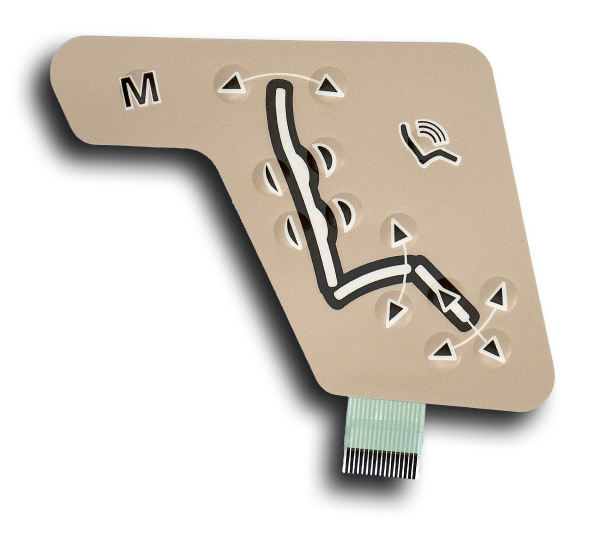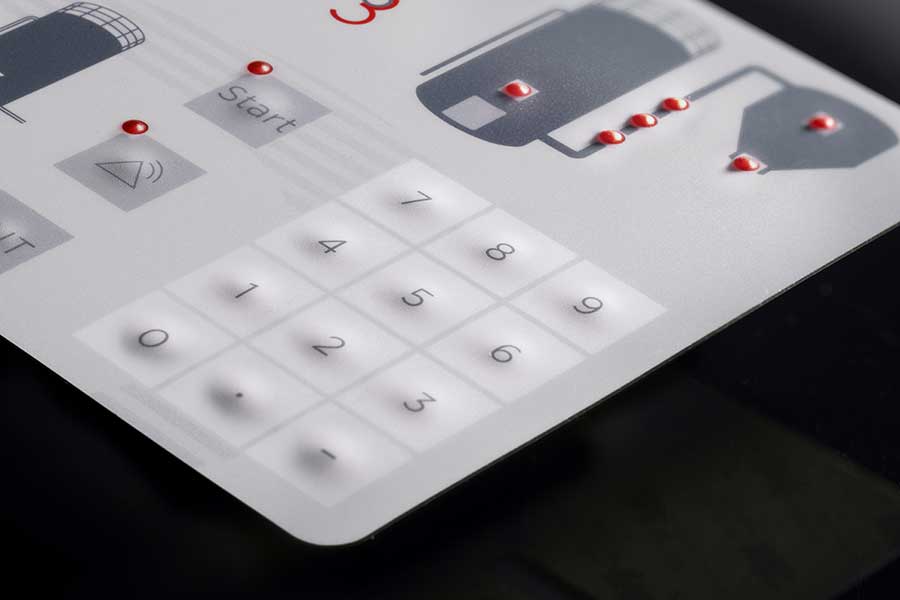Recognizing Membrane Switches: The Key to Long Lasting and Trustworthy Controls
Membrane layer switches represent a crucial aspect of modern-day user interface layout, blending functionality with strength in different applications. These versatile parts not just help with customer interaction but are also crafted to stand up to the rigors of requiring atmospheres, from medical devices to industrial equipment. Recognizing their building and construction, procedure, and the myriad benefits they offer is important for engineers and designers alike. As we discover the ins and outs of membrane layer switches, it becomes clear that their function in improving control systems is both intricate and extensive, questioning concerning exactly how best to utilize their capabilities in future innovations.
What Are Membrane Buttons?
Membrane layer buttons are an advanced option in the world of interface innovation, integrating functionality and style seamlessly. These gadgets function as a user interface between customers and digital systems, integrating several parts right into a small format. Typically built from flexible, slim layers of materials, membrane layer buttons are made to react to touch, enabling users to interact with equipment and digital tools efficiently.
The main components of a membrane layer button consist of a printed circuit layer, graphic overlay, and a spacer layer that avoids unintentional activation. The graphic overlay can be personalized to mirror brand name identification or individual preferences, enhancing looks while guaranteeing usability. Membrane layer buttons are generally used in various applications, including clinical gadgets, consumer electronic devices, and commercial equipment, owing to their toughness and resistance to environmental aspects such as wetness and dust.
Among the essential benefits of membrane layer switches is their capacity to hold up against deterioration, making them ideal for high-traffic settings. Furthermore, they are lightweight and require very little space, permitting for ingenious designs in item advancement. On the whole, membrane switches stand for a functional and reliable selection for modern digital user interfaces, marrying modern technology with user-centric style principles.

Exactly How Membrane Switches Over Job
The procedure of membrane layer switches over rest on an easy yet reliable mechanism that translates customer input right into electronic signals. These buttons are composed of several layers, commonly including a visuals overlay, a spacer layer, and a circuit layer. When a user presses the switch, the leading layer warps, allowing a conductive element in the circuit layer to reach an equivalent conductive pad on the bottom of the graphic overlay. This contact shuts the circuit and sends out an electronic signal to the tool, suggesting that the switch has actually been activated.
The style of membrane buttons can vary, but they frequently include domes or responsive aspects to offer feedback to the customer, improving the total experience. The products made use of in membrane layer buttons, such as polyester or polycarbonate, contribute to their durability and resistance to environmental elements, consisting of moisture and dust. Moreover, the published circuits are usually encapsulated, which safeguards them from deterioration gradually.

Benefits of Membrane Switches
Among the key benefits of membrane layer buttons is their convenience in layout, permitting them to be customized to satisfy specific customer needs and visual needs. This flexibility encompasses various markets, where various forms, dimensions, and colors can be used to enhance individual interaction and visual charm.
Additionally, membrane layer switches are known for their sturdiness. Constructed from robust products, they are resistant to dust, dampness, and physical wear, which substantially extends their life expectancy compared to typical mechanical buttons. This sturdiness makes them particularly ideal for high-traffic settings and applications requiring long life.

Moreover, membrane layer switches use a streamlined profile, leading to a thinner layout that can be integrated right home into various gadgets without adding bulk. This function not just enhances the visual appeal but additionally adds to an extra ergonomic product style.

Applications of Membrane Layer Switches
Functional and user-friendly, membrane switches discover applications throughout a vast array of sectors, consisting of medical gadgets, customer electronic devices, and industrial devices. In the clinical area, these buttons are essential to gadgets such as analysis equipment, client surveillance systems, and mixture pumps, where reliability and simplicity of cleansing are important. Their ability to endure rough environments and keep capability makes them optimal for such applications.
In customer electronics, membrane layer buttons are made use of in products like microwaves, washing makers, and remote controls - membrane switch. Their smooth design enables instinctive interface, boosting the total individual experience while providing longevity and resistance to tear and wear
Commercial equipment additionally takes advantage of membrane buttons, particularly in control panels for machinery go to the website and automation systems. These buttons supply defense versus dirt and wetness, making sure constant performance in challenging environments. Additionally, their customizable features permit suppliers to customize them to particular operational demands, boosting effectiveness and performance.
Picking the Right Membrane Layer Change
When picking a membrane layer switch, it is important to consider different factors that affect performance and suitability for certain applications. The primary factors to consider include ecological problems, tactile responses, toughness, and design requirements.
First, evaluate the operating setting; switches subjected to dampness, chemicals, or extreme temperature levels need specific materials to make sure longevity and functionality. Next off, assess the demand for tactile feedback. Depending upon customer interaction, some applications may gain from a responsive reaction to verify activation, while others might favor a non-tactile design for aesthetic reasons.
Longevity is an additional critical element; membrane buttons need to be designed to stand up to frequent use, impacts, and abrasion. Guarantee the chosen button can withstand the anticipated lifecycle, specifically in high-usage scenarios.
Conclusion
In conclusion, membrane layer changes serve as important parts in the layout of reputable and resilient control systems throughout different industries. The convenience of membrane changes allows for customized options that meet details operational demands, strengthening their relevance in modern innovation.
Membrane changes represent an essential facet of modern user interface design, mixing functionality with durability in different applications.Membrane layer switches are an innovative service in the world of user interface innovation, incorporating performance and layout perfectly. Commonly created from versatile, slim layers of materials, membrane buttons are designed to respond to touch, enabling individuals to interact with machinery and digital tools efficiently.
The style of membrane layer buttons can vary, however they usually incorporate domes or tactile aspects to give comments to Continued the customer, enhancing the overall experience.In final thought, membrane layer switches over offer as vital parts in the layout of reliable and resilient control systems across numerous sectors.